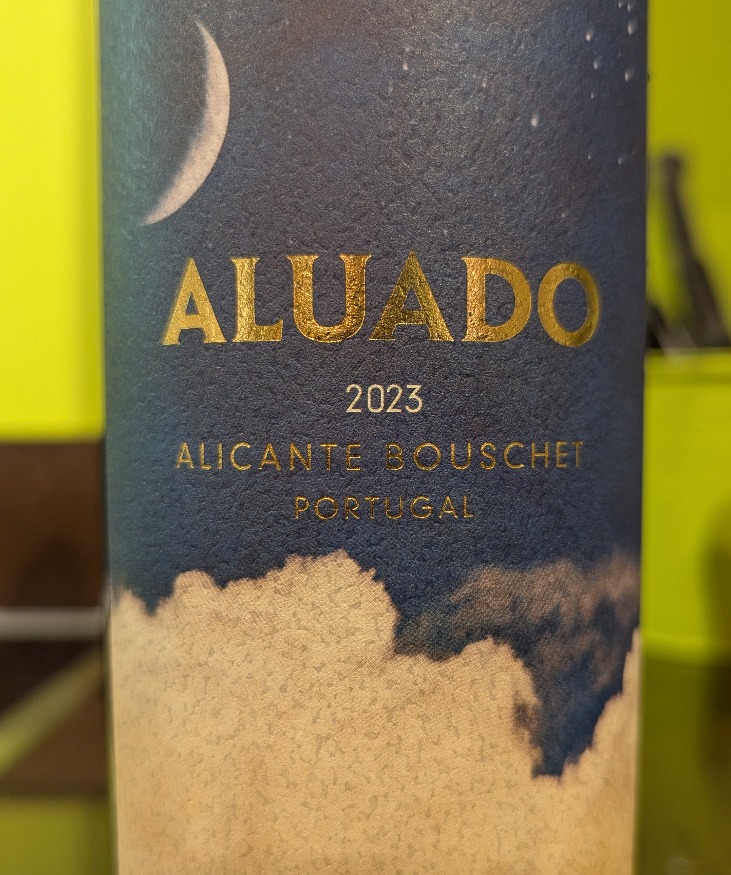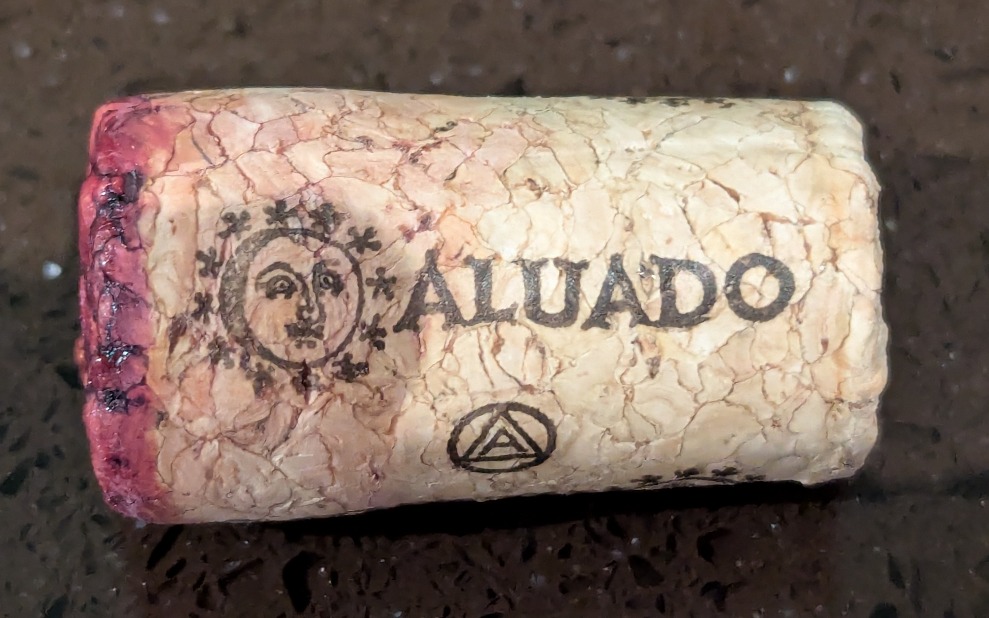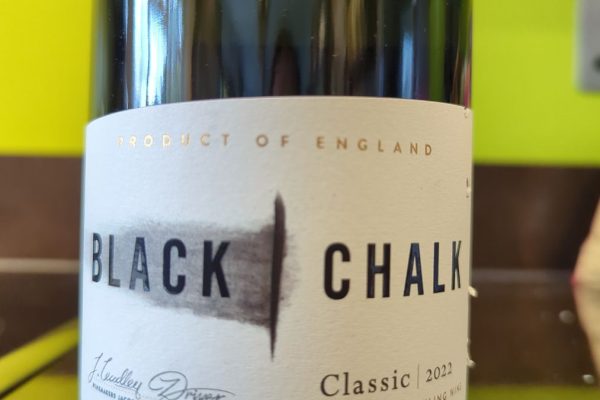
Aluado Alicante Bouschet is a wine that unusually uses the Alicante Bouschet grape, a variety I’ve found impressive in past Portuguese tastings. This grape is more commonly used in blends, making it quite rare to encounter a wine where it features predominantly or exclusively.
This wine comes from Quinta de Porto Franco family estate, situated just north of Lisbon. The 2023 vintage has an alcohol content of 12.5%. The winemaker behind this intriguing bottle is José Neiva Correia, a figure, according to Laithwaites, celebrated by wine critic Tim Atkin as a pivotal influencer in Portugal’s wine revolution. José’s innovative approach to using Alicante Bouschet as the primary grape in his wine led some to regard him as ‘aluado’ or moon-mad, reflected in the name and moon depicted on the bottle’s label.
Upon opening, one of the first things I noticed was the unusually small cork, suggesting that this wine is expected to be consumed while relatively young. The wine has a deep, dark colour, a characteristic often provided by Alicante Bouschet when used in smaller quantities for blending to enhance colour depth. The aroma is dominantly of blackberries, while the palate is greeted with flavours of black cherry and cherry plum, combining to create a fruit-forward profile. This wine is medium to full-bodied with a soft, pleasing mouthfeel, making it very approachable.
This wine is undoubtedly popular, being one of Laithwaites’ favourite reds, evidenced by over 1000 5-star reviews and a solid 4.1 rating on Vivino. However, it’s sweeter than I personally prefer my reds. The 12.5% ABV is indicative of its sweetness because Alicante Bouschet generally produces higher alcohol wines between 13.5% and 15%. In this case not all the sugar in this wine has been converted into alcohol. My testing with a hydrometer confirmed it’s on the border between off-dry and medium sweet. I suspect its popularity may be due to this sweetness and the round mouthfeel.
It’s priced at £11.99 from Laithwaites when purchased as part of a mixed dozen, which makes it an great option for those who enjoy a sweeter red.














